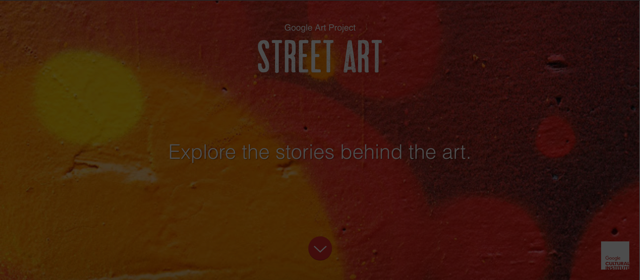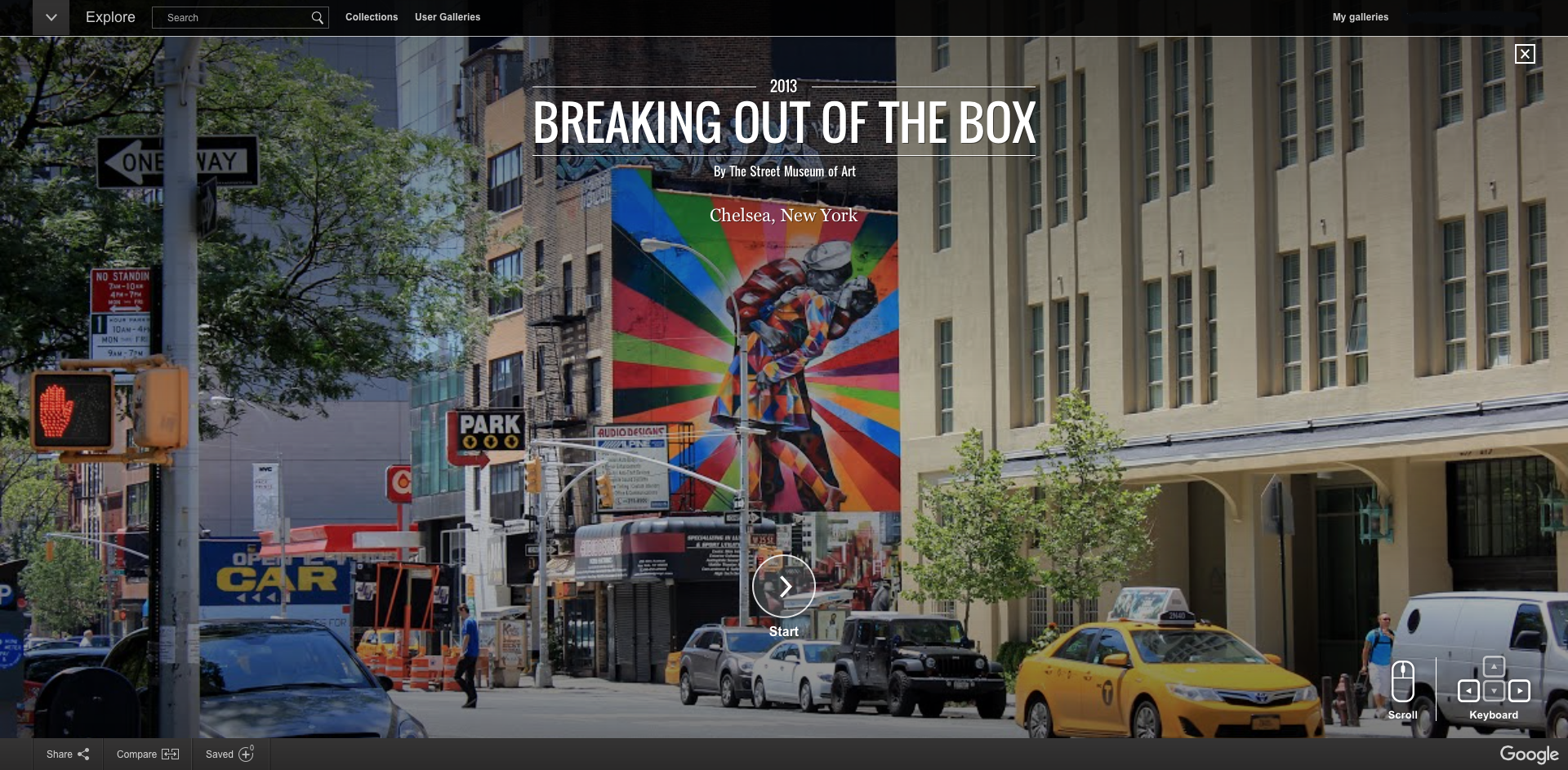The Street Museum of Art is pleased to announce its partnership with Google’s new Street ArtProject, an online sector of the Google Cultural Institute. By bringing together 30 global partners who have curated exhibitions and together provided more than 5,000 high resolution images, the goal is that anyone, anywhere can enjoy these artworks long after the paint has faded from the walls.
The partnership between The Street Museum of Art and Google’s Art Project reinforces the duality between the ephemeral life street art endures within the urban environment and its viral existence made possible through the internet and social media platforms. Street artists around the world are collectively changing the way we experience art.The Street Museum of Art and Google’s Art Project are among the first cultural institutions to follow in the street artist’s footsteps by introducing new models for curating exhibitions that coincide with this radical artform. Together the two projects support each other and the street art movement in a way that has not been possible before.
ABOUT THE EXHIBITIONS
In Plain Sight, The Street Museum of Art’s inaugural exhibition, is the first of its kind to adopt the guerrilla tactics of a street artist in its curation. Through the scavenger-hunt-like exhibition experience unique to The Street Museum ofArt, one can begin to imagine the artists on their search for the ideal urban canvas throughout Williamsburg, Brooklyn. Each piece is cleverly positioned by the artist – hidden in plain sight and taunting those who pass by to stop and look at the surrounding city in a new way.
Beyond Banksy: Not Another Gift Shop brought SMoA’s alternative exhibition style to the street of London, emphasizing the diversity found within this subversive art movement. Including the work of 12 international artists working in a variety of mediums — from sculpture, print and painting to installations, mosaics and miniature wheat pastes — the exhibition addresses generalizations that are still being made about what “street art” constitutes, essentially limiting one’s understanding of its full potential.
Breaking Out of the Box brings The Street Museum of Art’s unconventional exhibition model to Chelsea —the center of New York City’s commercial art world — drawing attention to the power of placement and its significance in defining street art. Once outside of the “white cube” gallery setting that has become standard, the unpredictable elements of a city become equally as important to the completion of street art as any wheat paste or spray paint used by the artists. Through the work of 15 artists found outside of the traditional gallery setting, Breaking Out of the Box highlights the dichotomy between traditional exhibition methods and the contemporary street art movement.
Dans la Rue: The Street Museum of Art teams up with Station16 Gallery for the launch of Dans la Rue, a public exhibition of the illegal art found around Montréal’s Plateau. After MURAL Festival transformed Saint-Laurent Boulevard with a series of commissioned murals, Dans la Rue: Montréal takes visitors through the neighborhood once again to rediscover what was already there. Including the work of 12 local artists — this exhibition celebrates the fleeting, subversive and DIY nature of the street art and graffiti movements with each piece having been placed on the street, for the public, without permission.
24hrs in NYC: Back in New York City, The Street Museum of Art teams up with 18 local artists for the first artist-run, public exhibition of its kind, challenging the current model for “public” art museums by collectively working outside conventional exhibition spaces. Any piece pasted within the 5 boroughs, by any local artist — 24hrs in NYC became citywide public art experiment grounded on the artists’ reclamation of public space. Presented with only a deadline and one rule to keep the details of the exhibition a secret until the launch date, the artists acted as their own curators — taking the concept of the museum and letting it run wild in the streets.
Connecting all 5 exhibitions is the artists’ use of the urban environment as their primary medium, enabling the public to see and interact with their work on a level unobtainable within a traditional exhibition setting.
“When the street is your canvas, the world becomes one huge open air gallery for everyone to enjoy. But these works of art that decorate our streets do not always hang about for long, which is why we’re delighted to work with partners around the globe to help them preserve online”
— Amit Sood, Director of the Google Cultural Institute






